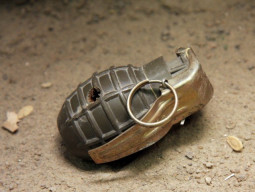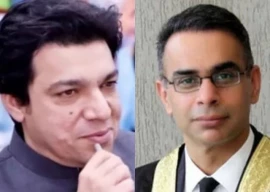
The Sindh Wildlife Department (SWD) has initiated the population census of migratory birds flying in from some of the world's coldest regions, including Siberia, every year. These birds fly to the water bodies and sea waters in Karachi and rural Sindh. The bird census will continue until mid-March, utilising a combination of conventional and modern instruments, including spotting scopes, to ensure accurate counting.
Javed Mehr, Conservator of Sindh Wildlife Department, highlighted the successful destruction of hundreds of traps set by poachers at Keenjhar Lake, located at the end of the Indus flyway zone. As winter sets in, these feathered guests from frigid regions, such as Siberia, embark on a journey covering thousands of miles through the Indus flyway zone, ultimately reaching the water bodies of Sindh, including Karachi.
The annual flight of these birds typically commences in November and extends over four months before they return to their original habitats in March. This diverse group of migratory birds includes both water and land species. Experts attribute their migration to milder regions like Pakistan to escape severe cold and snowfall that freeze their food sources in their native lands.
Climate change and other factors, such as the shrinking of water bodies and a lack of fresh water, have influenced the fluctuating numbers of these migratory birds in Sindh. Deputy Conservator Mumtaz Soomro reports that the ongoing bird census spans various districts in rural Sindh, including Karachi. Teams are counting birds in Hawke's Bay, Hub Dam, Korangi Creeks, Manchar Lake, Keenjhar Lake, and Haleji Lake in Karachi.
Read: Seasonal bird hunting allowed on weekends
At the same time, a comprehensive counting effort is underway in other areas, including Rann of Kutch, Ranpur Dam, Sanga Lake, Bodi Sir Lake, Noori Lake, Phosna Lake, Ach Lake, Crush Lake, Lung Lake, Hamai Lake, Drug Lake, Mehrano Lake, Sufi Anwarshah Lake, Mobho Lake, and Hadero Lake.
To conduct the counts, a square line is established near the water bodies and habitats of these birds, equipped with devices such as spotting scopes. The number of birds within this frame is tallied, and the process is repeated at intervals of a few kilometres to compile an accurate count.
Conservator Javed Mehr emphasises that previous legal restrictions on bird hunting were exploited by poaching mafias. Stricter measures were implemented in 2020, granting Sindh Wildlife Department teams the status of Wildlife Protection Police. This change has resulted in a positive impact, evident not only in recent years but also in the increasing numbers of birds.
Mehr further notes that due to its extensive area, Keenjhar Lake has been a target for poaching. Legal actions against poachers often face resistance, but a joint effort involving the staff of Sindh Wildlife Department Hyderabad, Thatta, Sjawal, and the Thatta police has seized and destroyed several hundred traps.
Published in The Express Tribune, January 24th, 2024.




































COMMENTS
Comments are moderated and generally will be posted if they are on-topic and not abusive.
For more information, please see our Comments FAQ